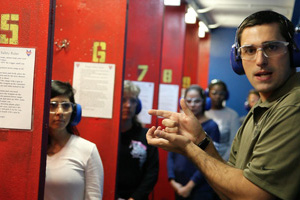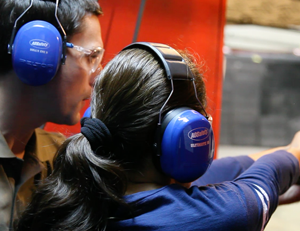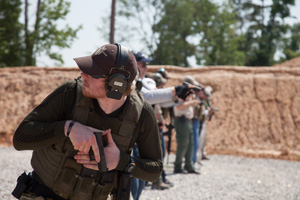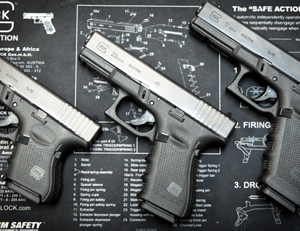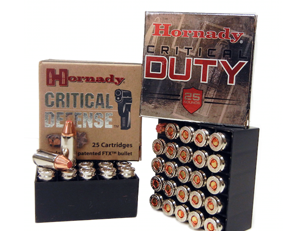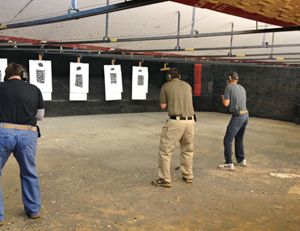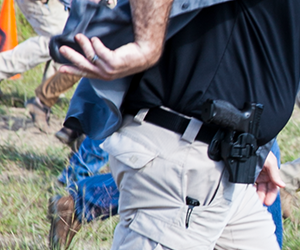
18
GOOD HABITS OF THE EVERYDAY HANDGUN CARRIER
GOOD HABITS OF THE EVERYDAY HANDGUN CARRIER
Choosing to join the over one million licensed to carry Texans comes with great responsibility. We encourage License to Carry (LTC) citizens to know more than the minimum standards. Licensed holders are responsible for every bullet in their weapon. Education starts with basic safety handling and ascends to personal defense in dynamic environments. Licensed individuals should invest in quality training that includes understanding the laws pertaining to carrying a weapon and the proper tactics of deploying a weapon for personal defense.
Carrying Every Day: As the saying goes… “Rules for a Gunfight – Rule #1: Bring a Gun.”
Purchasing a Quality Made Holster: The holster should be made for your weapon, not a one size fits all. Be sure that your holster is a good fit holding the weapon securely. When you draw your gun the holster should stay in place. Test your holster often and practice often.
Carrying a Handgun in Your Car: While we encourage that your weapon be carried on your person for positive control at all times, we recognize that due to other influences (how you are dressed that day, location you are at, long driving trips) you may have to stage you weapon in your vehicle while you are driving. Again, you must “test” your staged location; can you really get to your weapon in a dynamic situation? When you exit your vehicle can you take the weapon with you? If not, your weapon should be secured in some fashion. We like firearm lock boxes. Remember the weapon is your responsibility.
Knowing your Gun Laws: Stay up to date with current gun laws in your state and familiarize yourself with laws in any state or location you visit.
Extra Magazines: A spare magazine can make the difference between life and death. Don’t be caught empty-handed during a fight.
Avoiding Alcohol: Drinking while carrying on your person is always a bad idea. Alcohol will alter your ability to reason and fight.
Being Aware of Your Prescription Medications: Be aware of what medications you are taking and how they affect you.
Practicing Your Draw: Practice presenting the weapon from concealment. Think about the manner in which you are carrying the handgun and how that effects your draw.
Have a Flashlight: Often times conflict will occur in low light situations, have a flashlight and know how to shoot while illuminating a threat.
Professional Training: Improve your chances of prevailing in a fight; seek out professional training that includes the use of reality based scenarios.
Defense Ammunition: There are many defense ammunition choices out on the market. Take the time to understand the ballistics and features of the ammunition you choose to see if it meets your needs. Be sure to test the performance of the ammunition you choose to see how it cycles through your weapon.
Practicing Safe Storage: Know and understand the responsibilities and consequences when handguns are made available to anyone other than those who should have access.
Avoiding Complacency: Shooting is a perishable skill and people forget what they have learned and fall into a false sense of confidence when carrying every day. Practice regularly and set training goals.

18
GOOD HABITS OF THE EVERYDAY HANDGUN CARRIER
GOOD HABITS OF THE EVERYDAY HANDGUN CARRIER
Choosing to join the over one million licensed to carry Texans comes with great responsibility. We encourage License to Carry (LTC) citizens to know more than the minimum standards. Licensed holders are responsible for every bullet in their weapon. Education starts with basic safety handling and ascends to personal defense in dynamic environments. Licensed individuals should invest in quality training that includes understanding the laws pertaining to carrying a weapon and the proper tactics of deploying a weapon for personal defense.
Carrying Every Day: As the saying goes… “Rules for a Gunfight – Rule #1: Bring a Gun.”
Purchasing a Quality Made Holster: The holster should be made for your weapon, not a one size fits all. Be sure that your holster is a good fit holding the weapon securely. When you draw your gun the holster should stay in place. Test your holster often and practice often.
Carrying a Handgun in Your Car: While we encourage that your weapon be carried on your person for positive control at all times, we recognize that due to other influences (how you are dressed that day, location you are at, long driving trips) you may have to stage you weapon in your vehicle while you are driving. Again, you must “test” your staged location; can you really get to your weapon in a dynamic situation? When you exit your vehicle can you take the weapon with you? If not, your weapon should be secured in some fashion. We like firearm lock boxes. Remember the weapon is your responsibility.
Knowing your Gun Laws: Stay up to date with current gun laws in your state and familiarize yourself with laws in any state or location you visit.
Extra Magazines: A spare magazine can make the difference between life and death. Don’t be caught empty-handed during a fight.
Avoiding Alcohol: Drinking while carrying on your person is always a bad idea. Alcohol will alter your ability to reason and fight.
Being Aware of Your Prescription Medications: Be aware of what medications you are taking and how they affect you.
Practicing Your Draw: Practice presenting the weapon from concealment. Think about the manner in which you are carrying the handgun and how that effects your draw.
Have a Flashlight: Often times conflict will occur in low light situations, have a flashlight and know how to shoot while illuminating a threat.
Professional Training: Improve your chances of prevailing in a fight; seek out professional training that includes the use of reality based scenarios.
Defense Ammunition: There are many defense ammunition choices out on the market. Take the time to understand the ballistics and features of the ammunition you choose to see if it meets your needs. Be sure to test the performance of the ammunition you choose to see how it cycles through your weapon.
Practicing Safe Storage: Know and understand the responsibilities and consequences when handguns are made available to anyone other than those who should have access.
Avoiding Complacency: Shooting is a perishable skill and people forget what they have learned and fall into a false sense of confidence when carrying every day. Practice regularly and set training goals.

